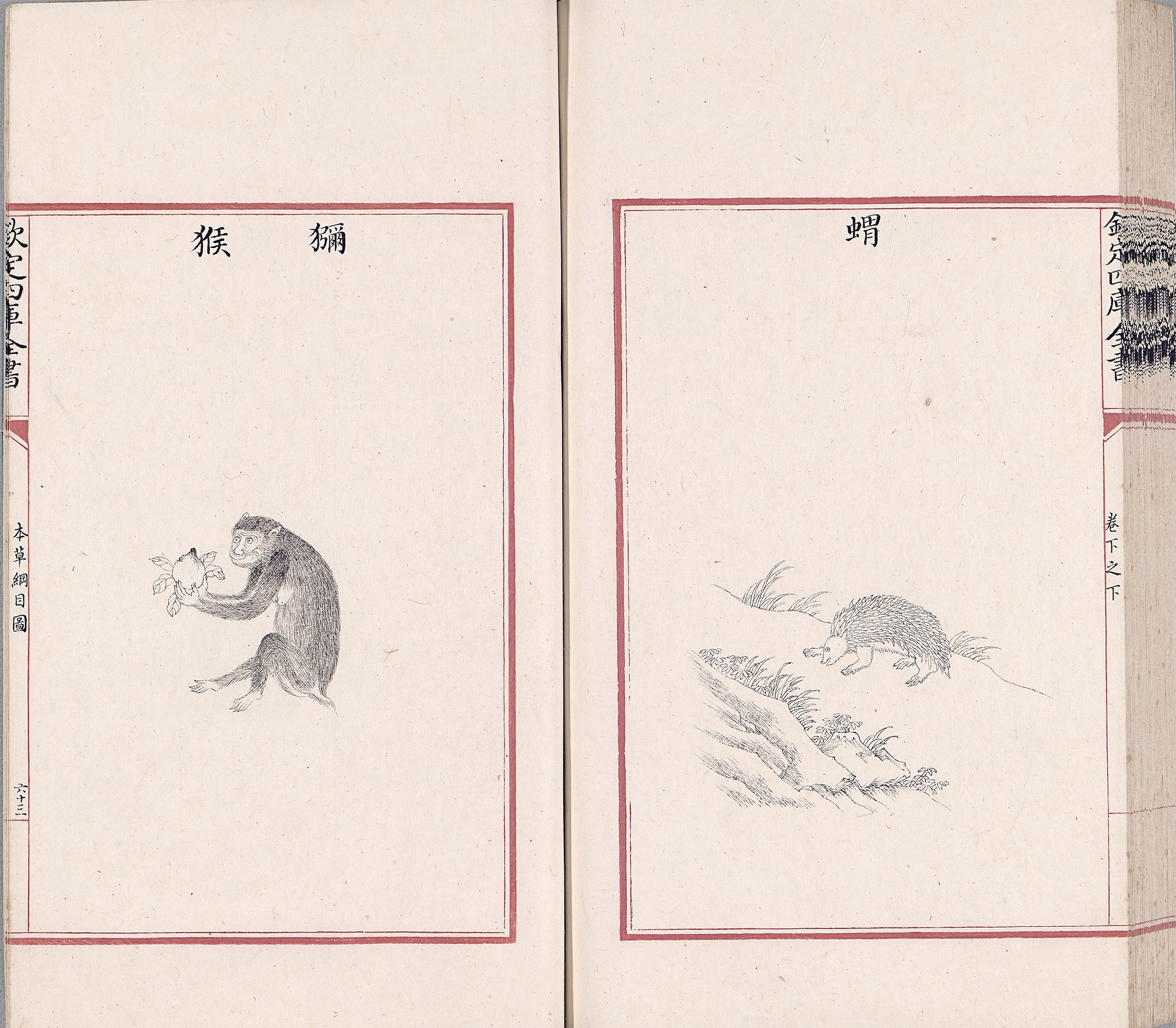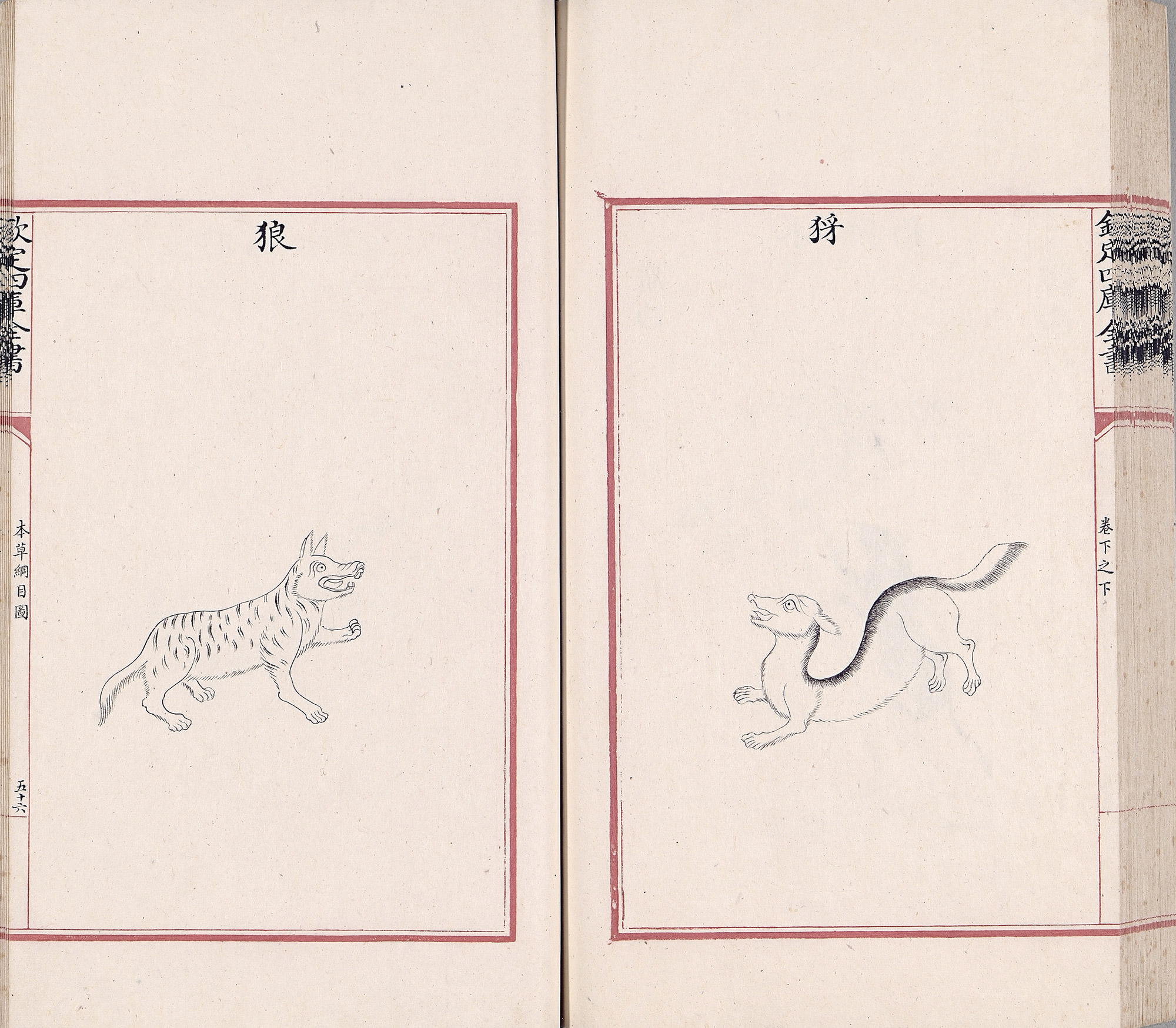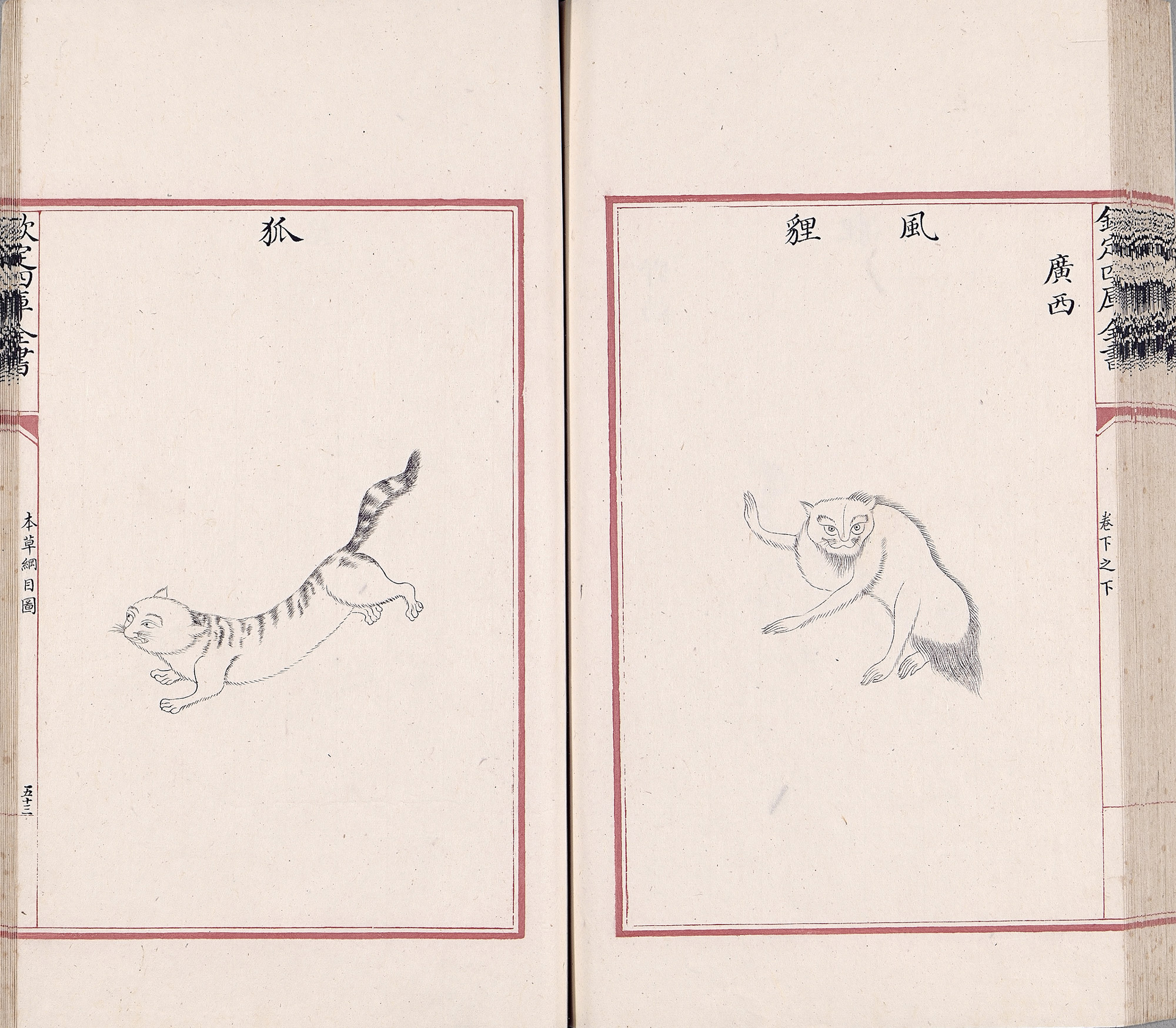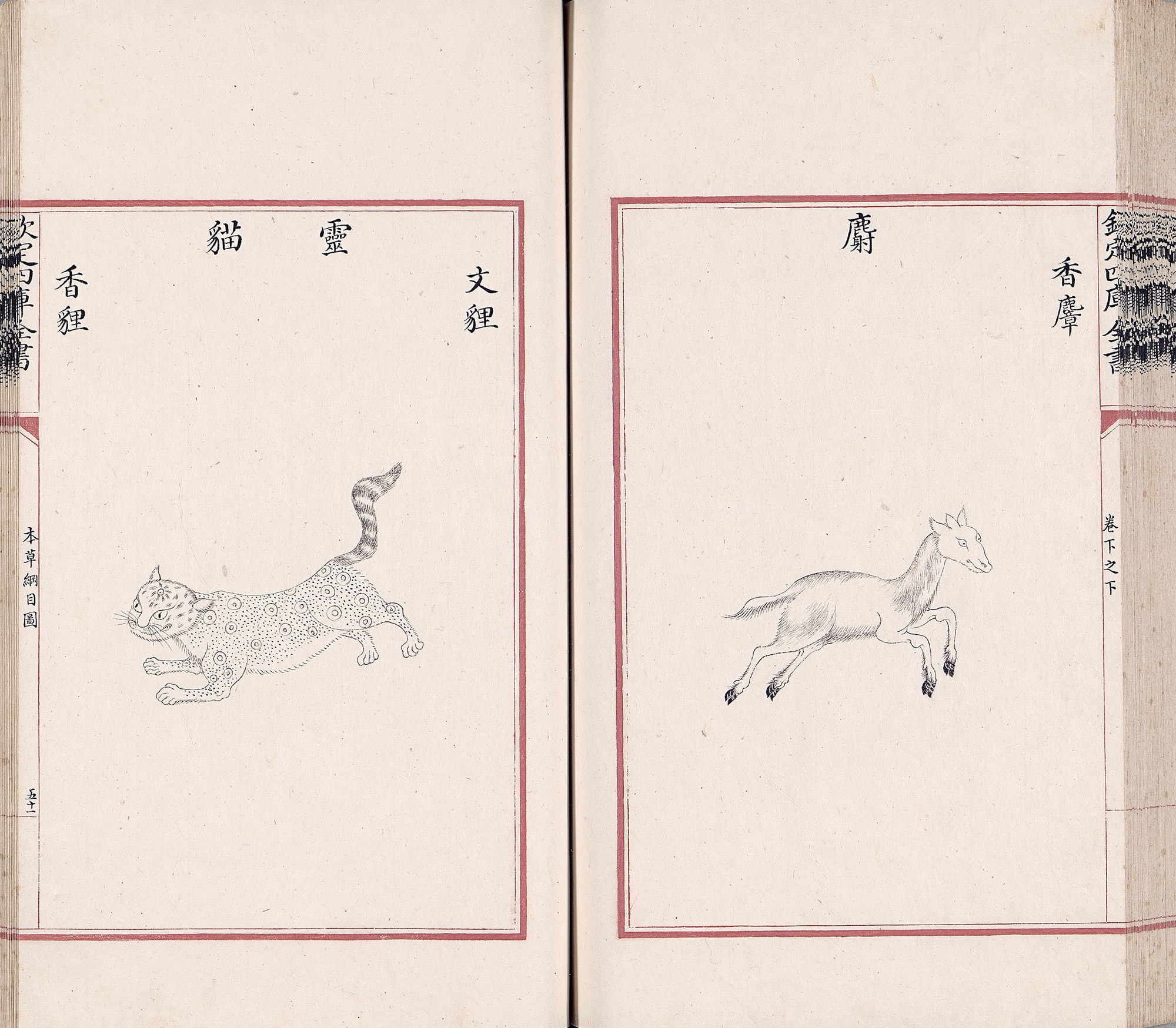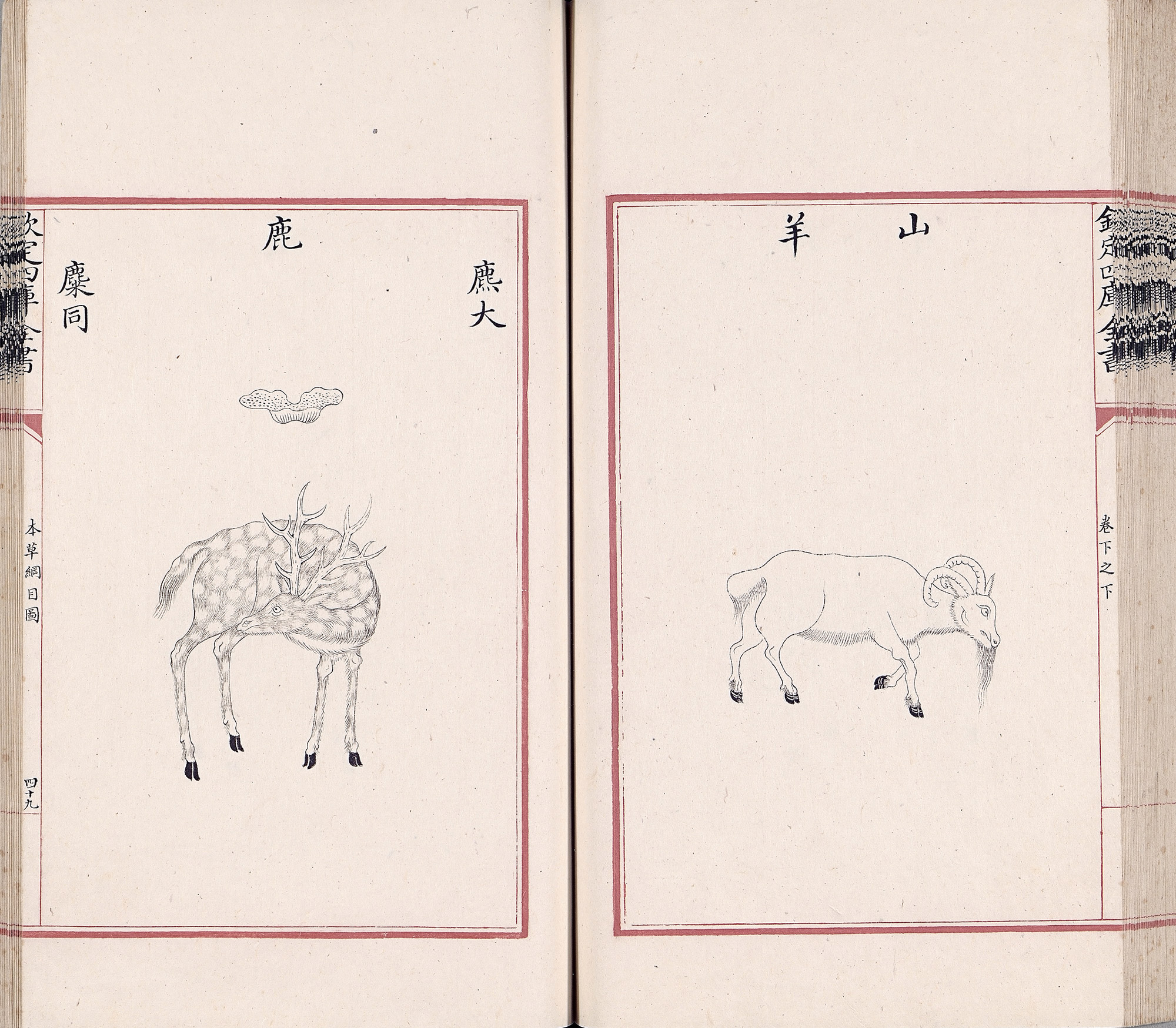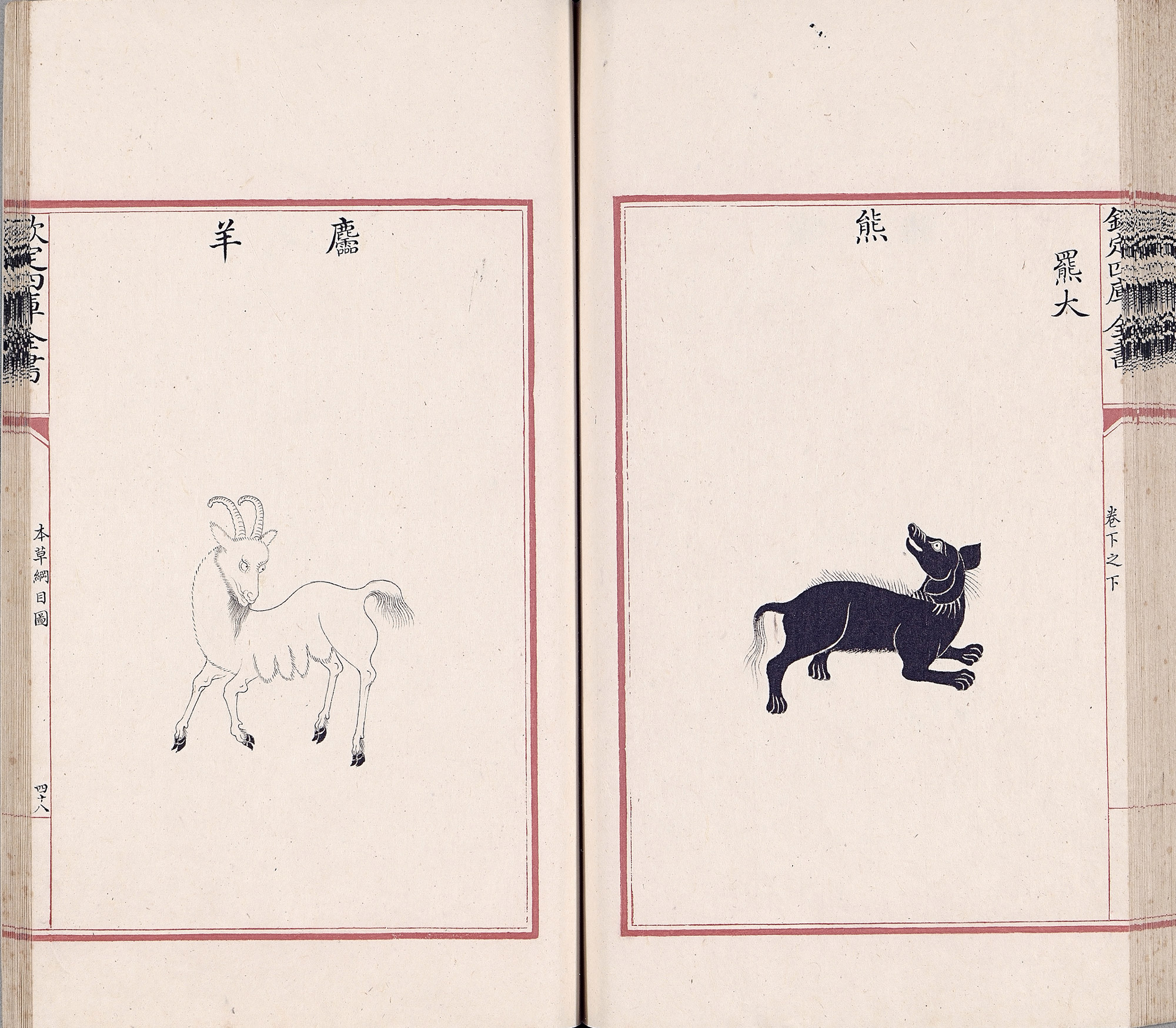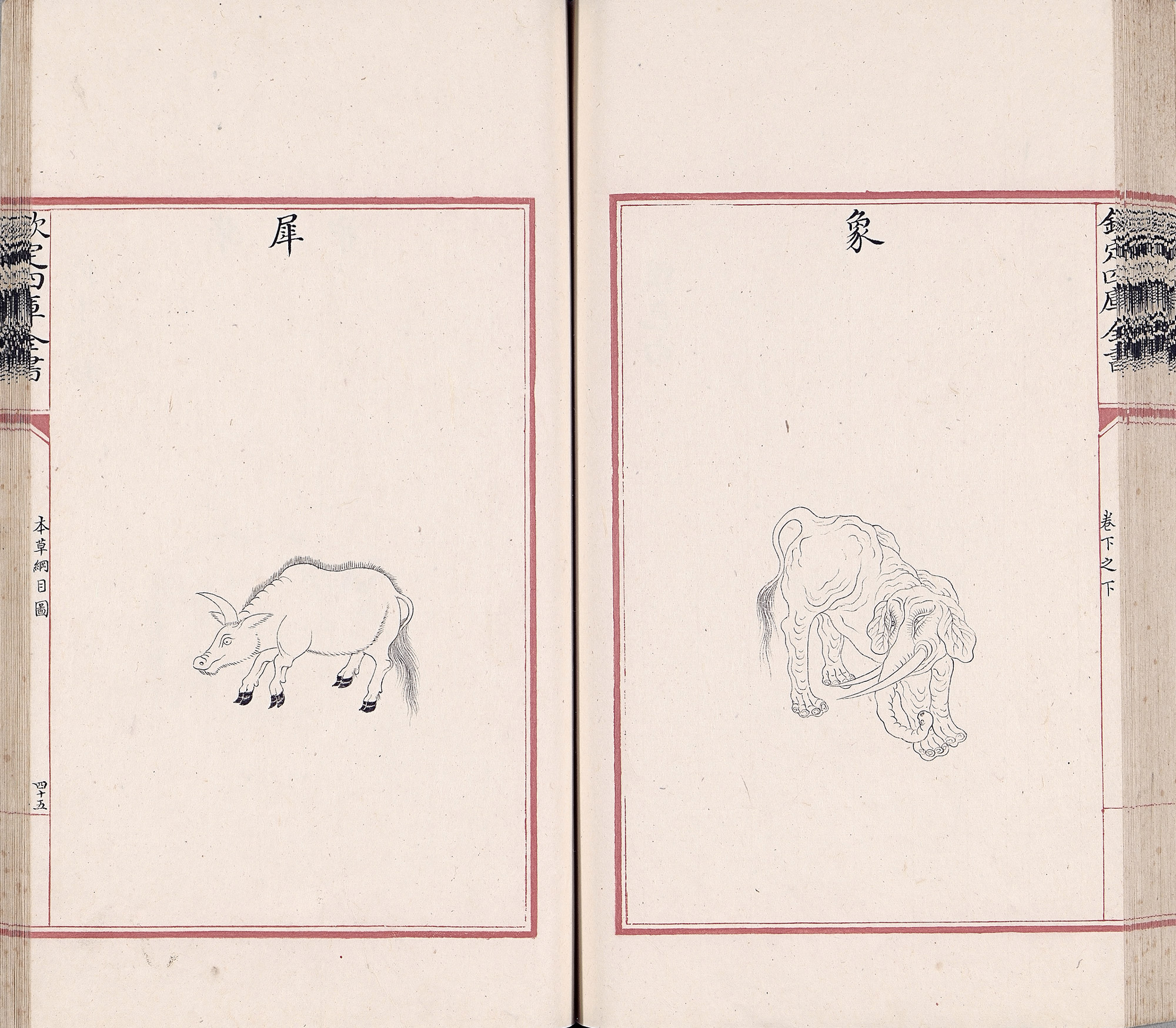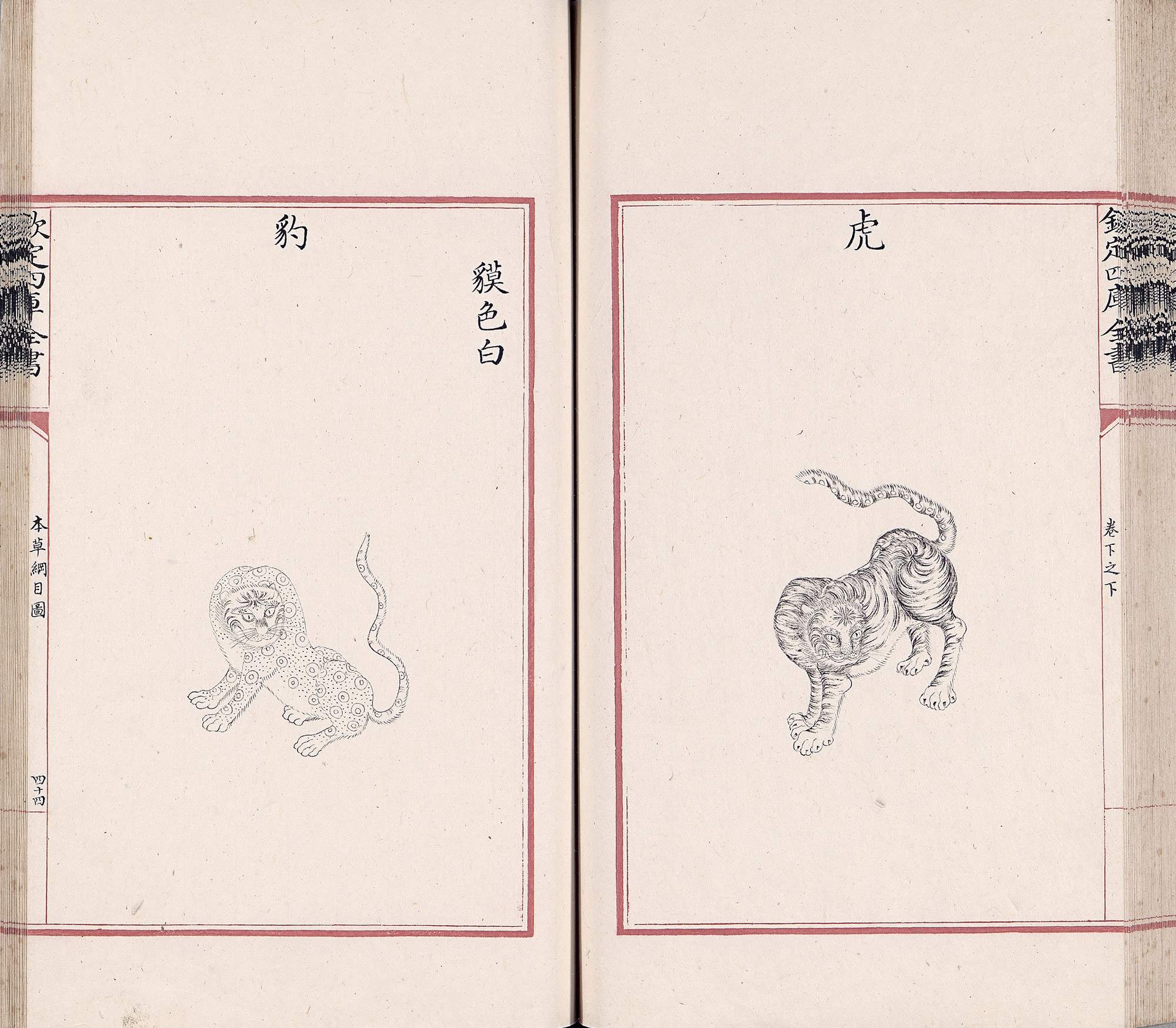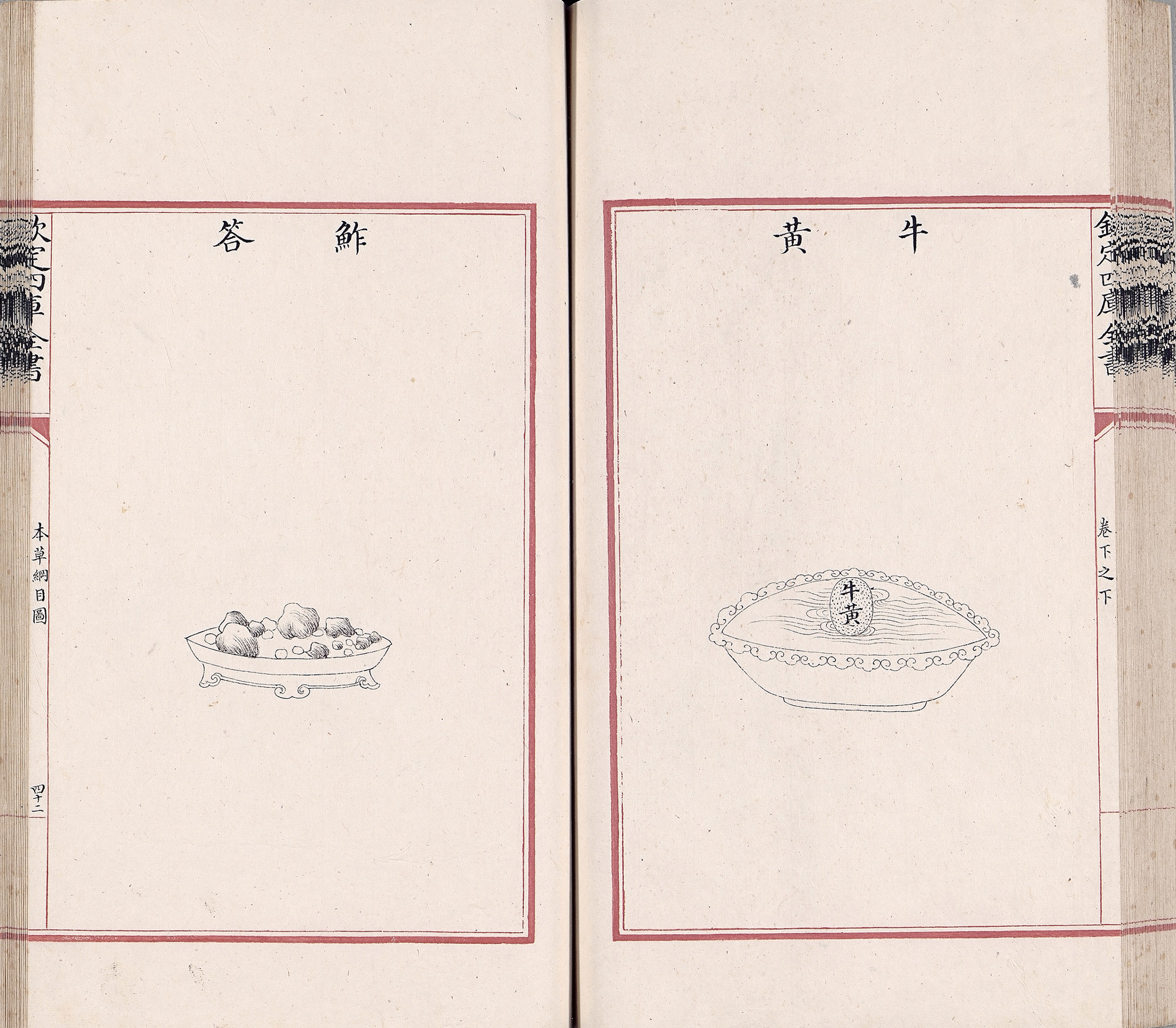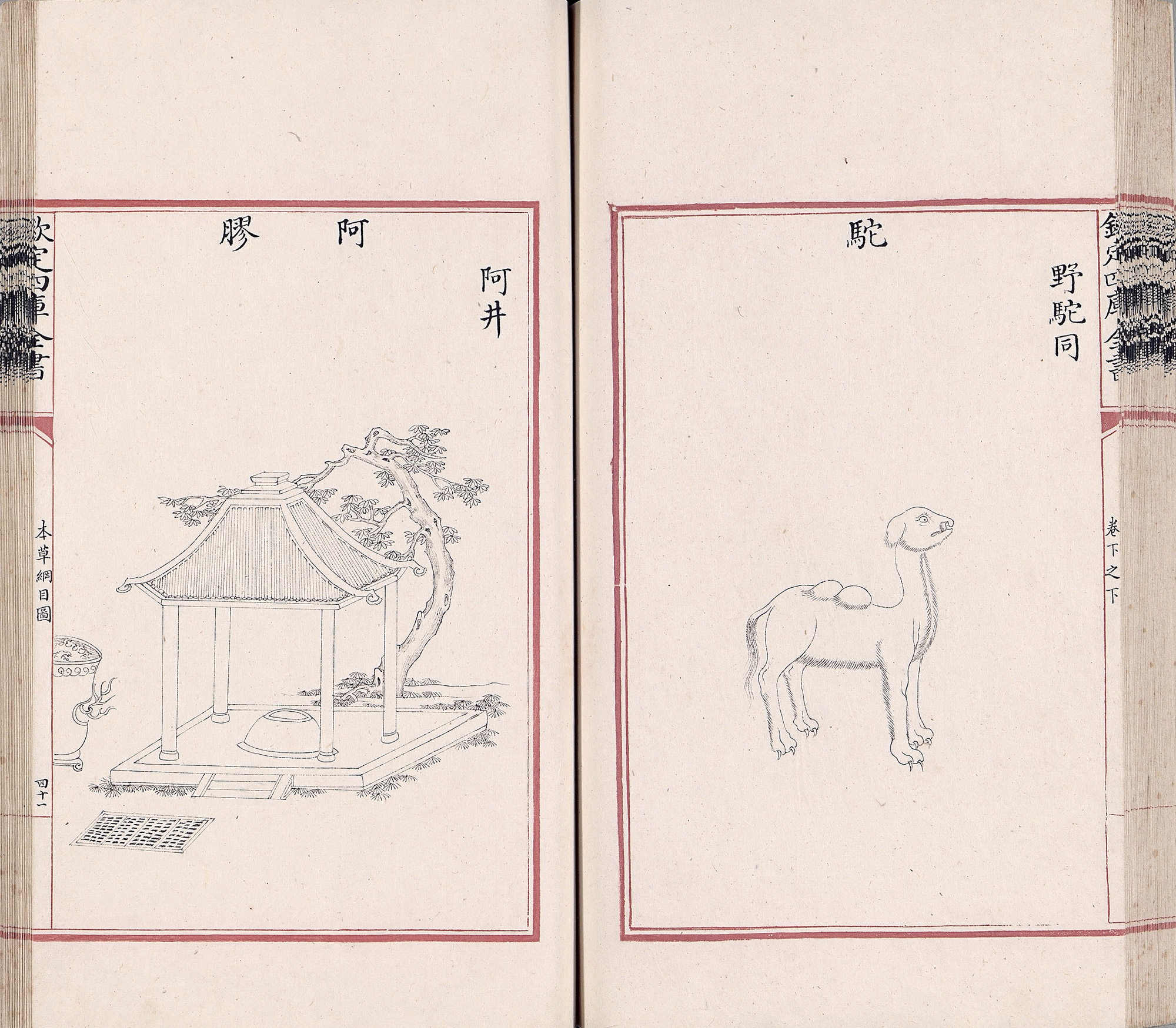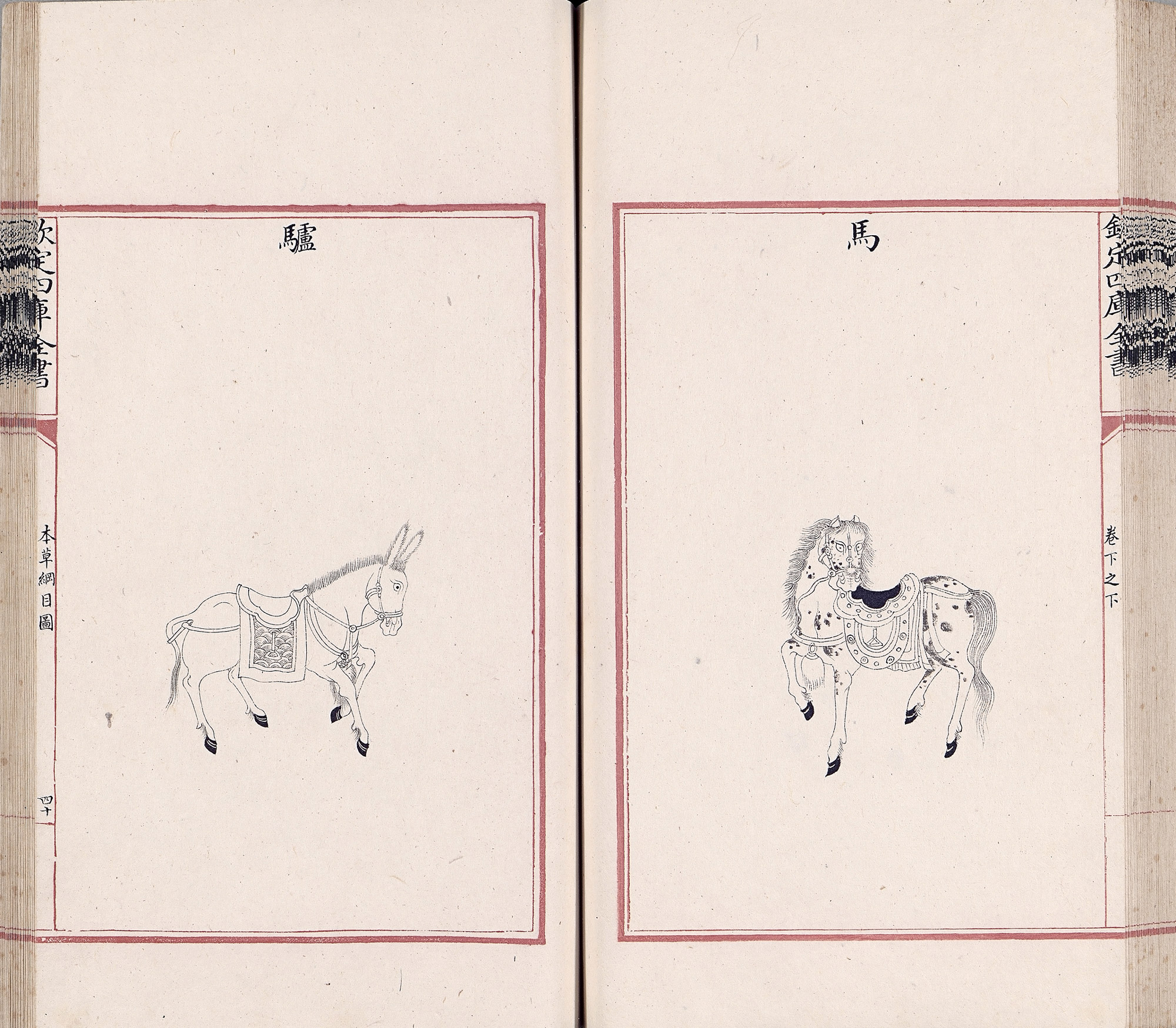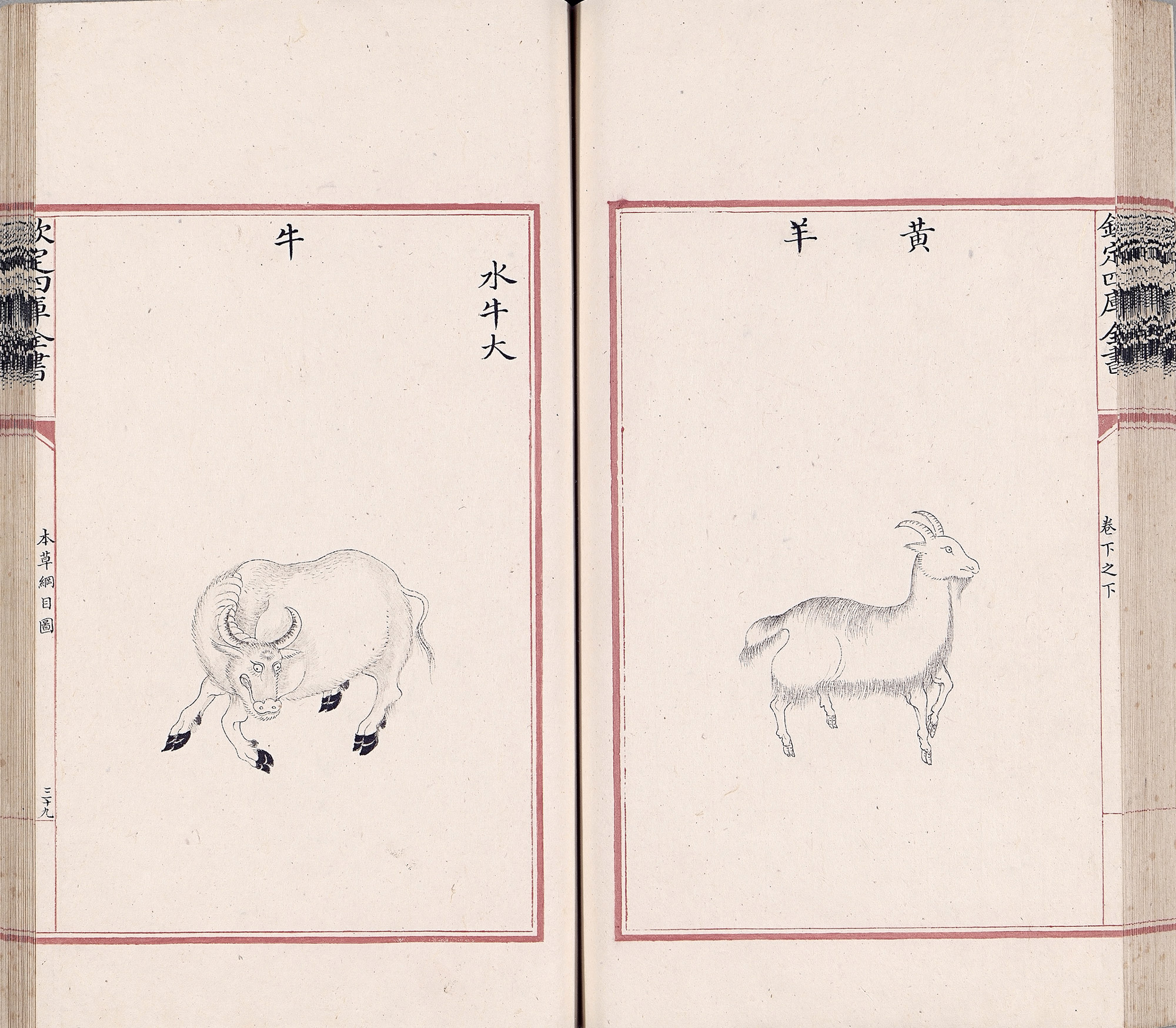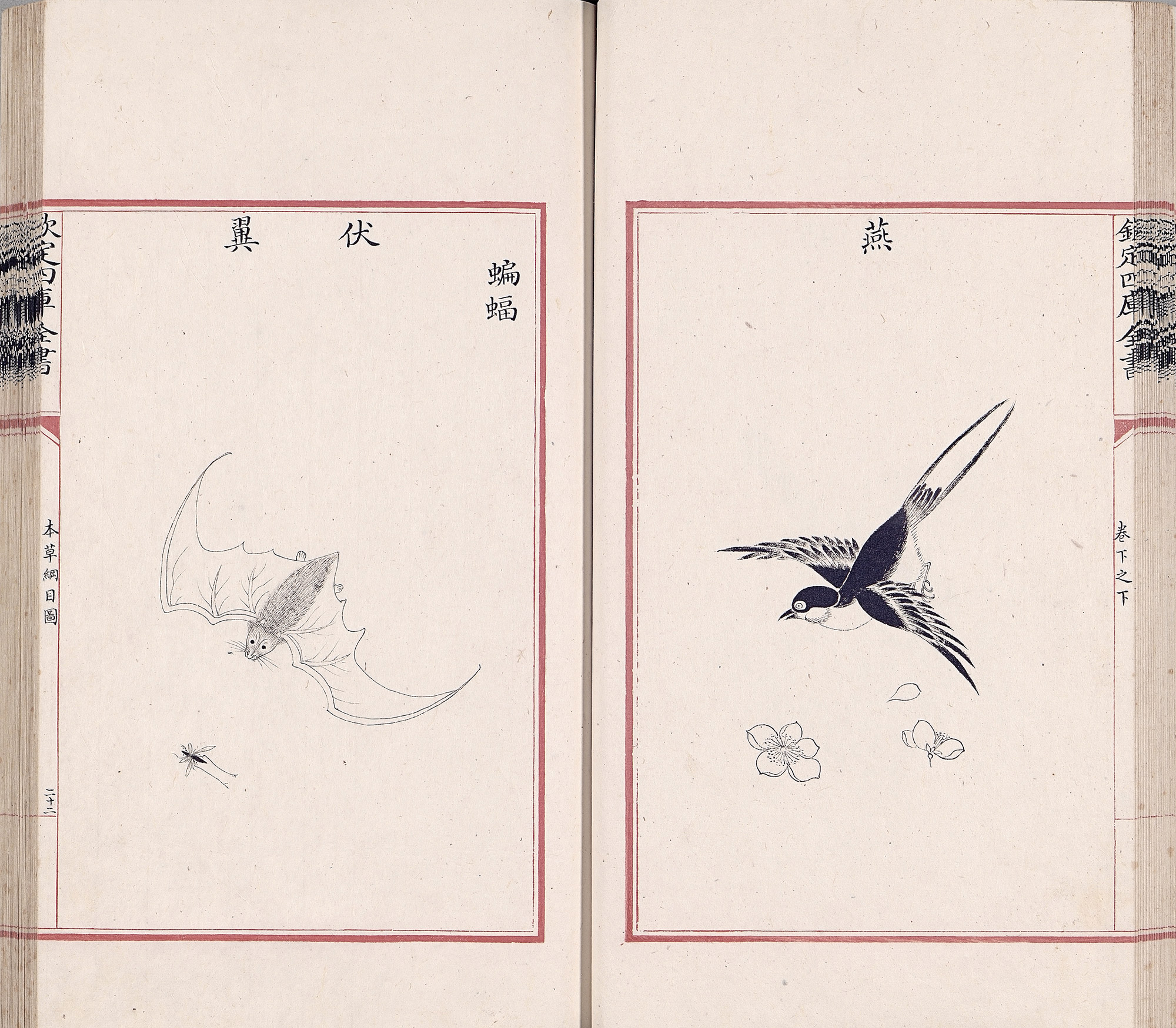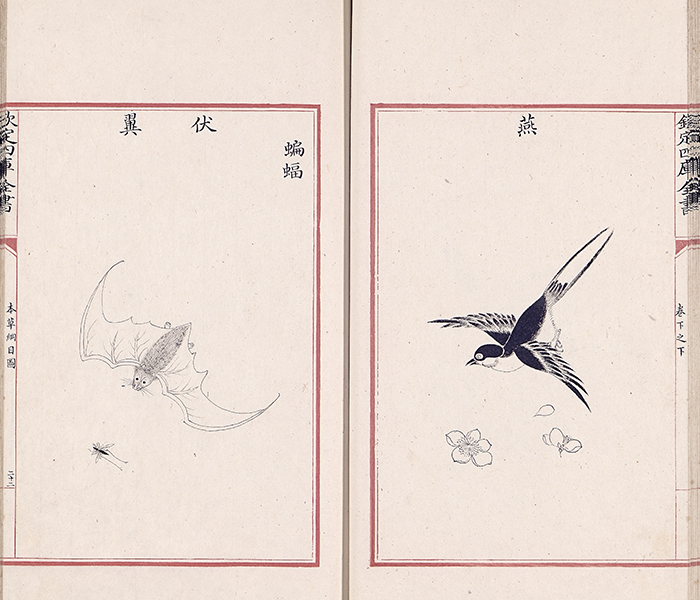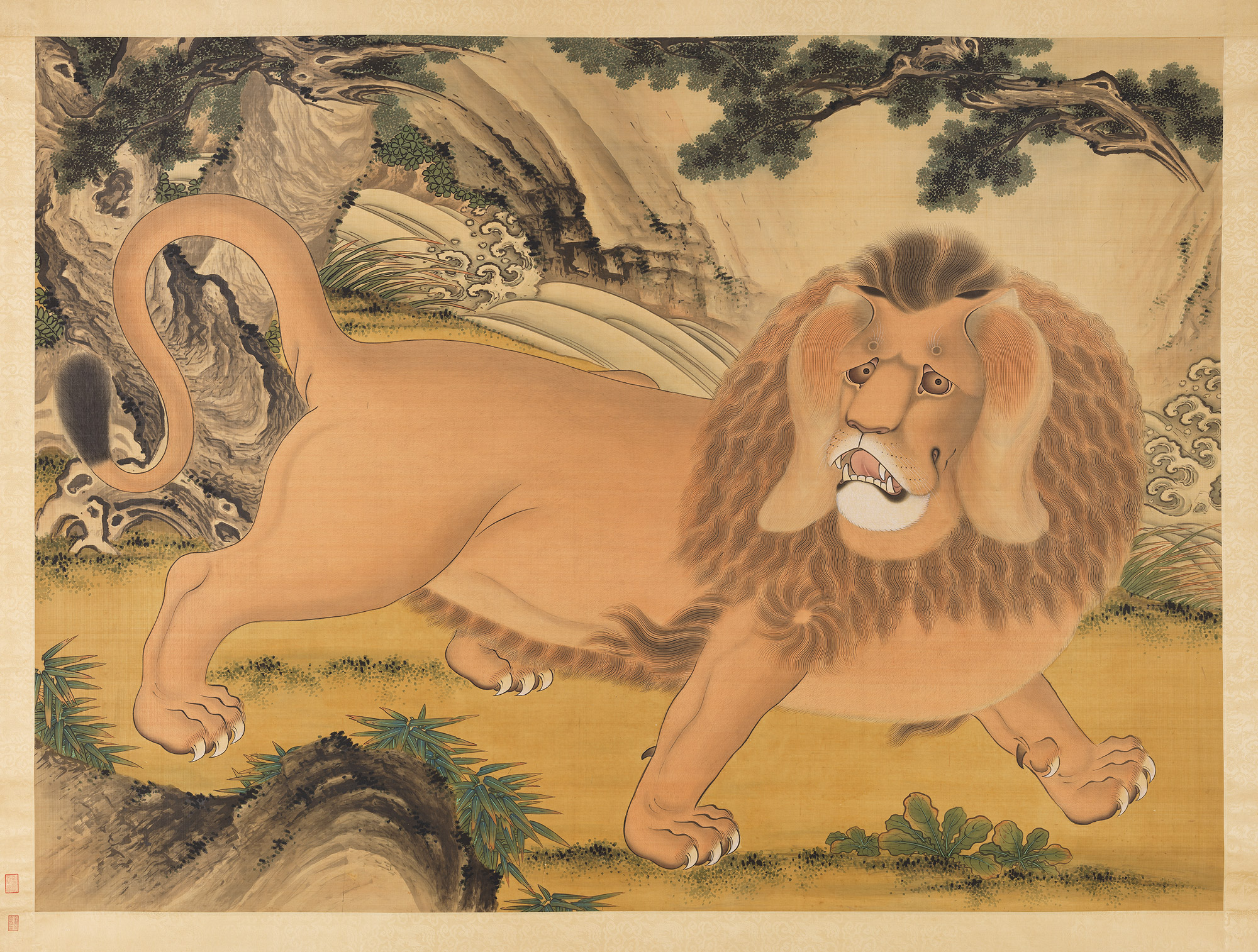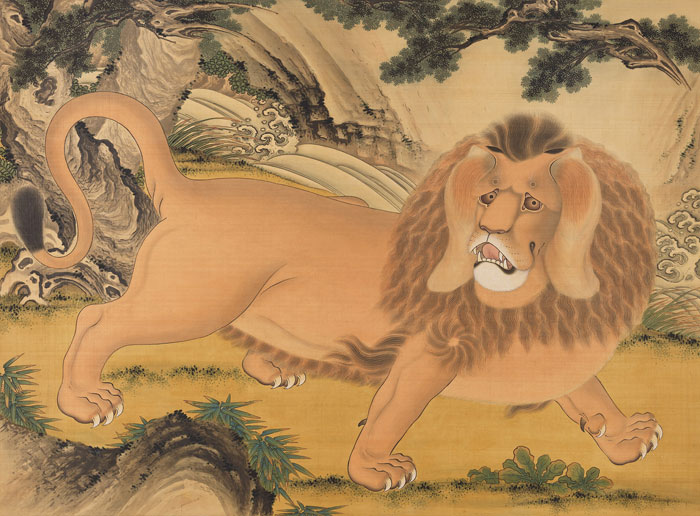Encyclopaedia, compendia and scientific inquiry
The image not only shoulders the task of defining the "observed object", but is also an important apparatus for training scientists "how to see". Drawing on various biological records created since ancient times, this section of the exhibition marks the artistic turn in the humanistic trend of scientific exploration. It brings together practical scientific volumes, such as the Ming Dynasty's Compendium of Materia Medica and Collected Illustrations of the Three Realms, as well as the Kunyu Quantu, a world map from the late Ming and early Qing dynasties based on Western geophysical knowledge and natural history, and also naturalist illustrations produced by the Qing court, such as Manual of Birds, Illustrated Album of Sea Miscellany and Yang Ta-chang's E-mo Birds, in which attention is paid to the precise details of the illustrated object and contains such information as biological size, origin and attributes. This section also features artworks inspired by modern medical technology, such as the Omura Whale Documentary and CT Scans of a cat and a dog.
-
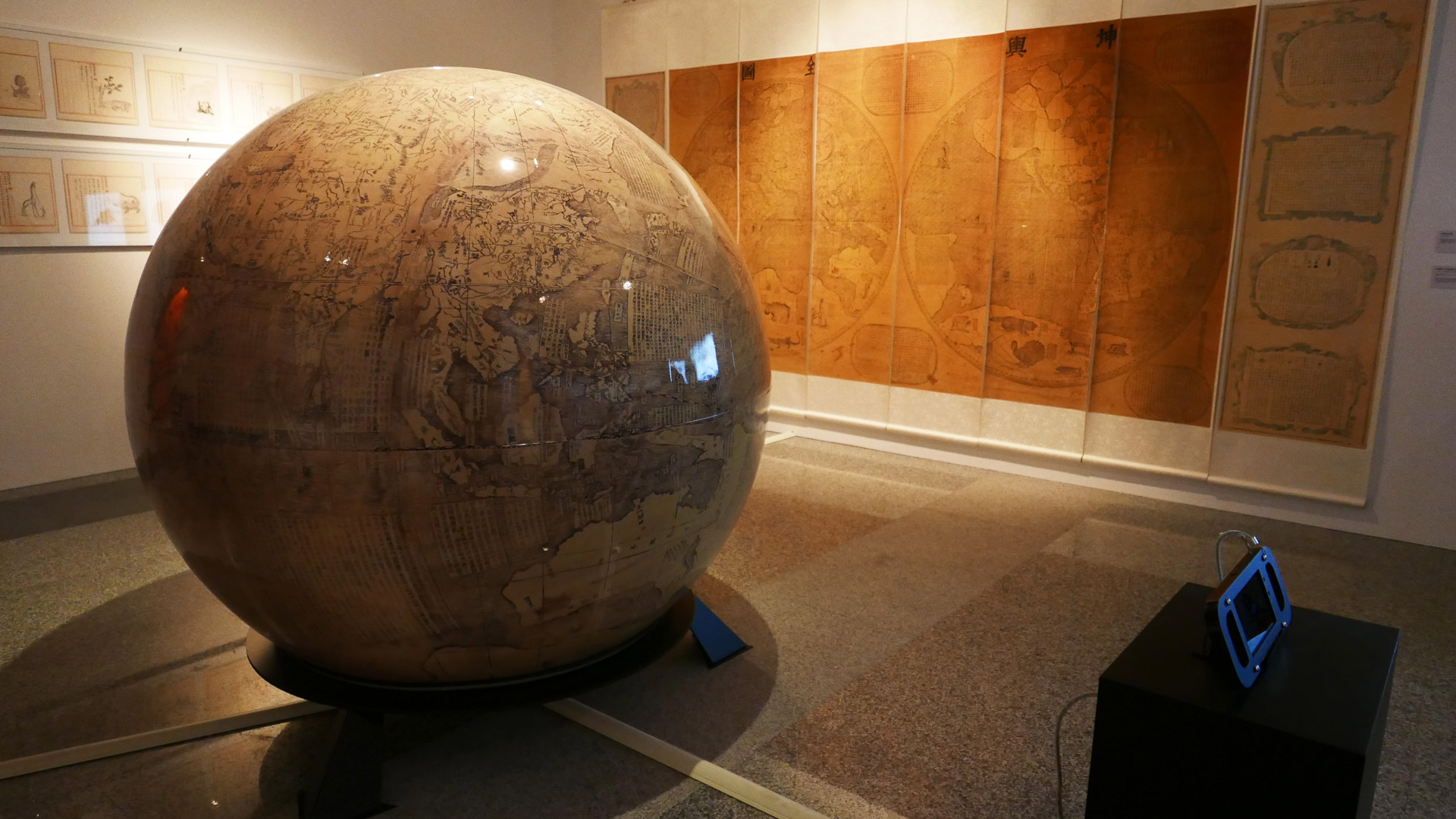
The Universal World of Ferdinand Verbiest
- National Palace Museum
- 2018
- Artefact Inspiration: The Universal Map of the World (Kunyu Quantu ) the Illustrated Explanation of the World, developed by Ferdinand Verbiest, Qing dynasty (1644-1911)
The Universal World of Ferdinand Verbiest is a novel media installation that was inspired by the Universal Map of the World (Kunyu Quantu) and the Illustrated Explanation of the World, both by Ferdinand Verbiest, in the National Palace Museum collections. The installation has adopted a special map projection method that transforms the Universal Map of the World into an actual globe, which is then combined with three-dimensional augmented reality technology to link the real sphere and virtual map world via mobile devices. Approximately four hundred years ago, Ferdinand Verbiest made use of hand-drawn maps to assist the Emperor Kangxi in understanding the structure of the world. Now, making use of augmented reality, we seek to reproduce the same enlightening experience.
-
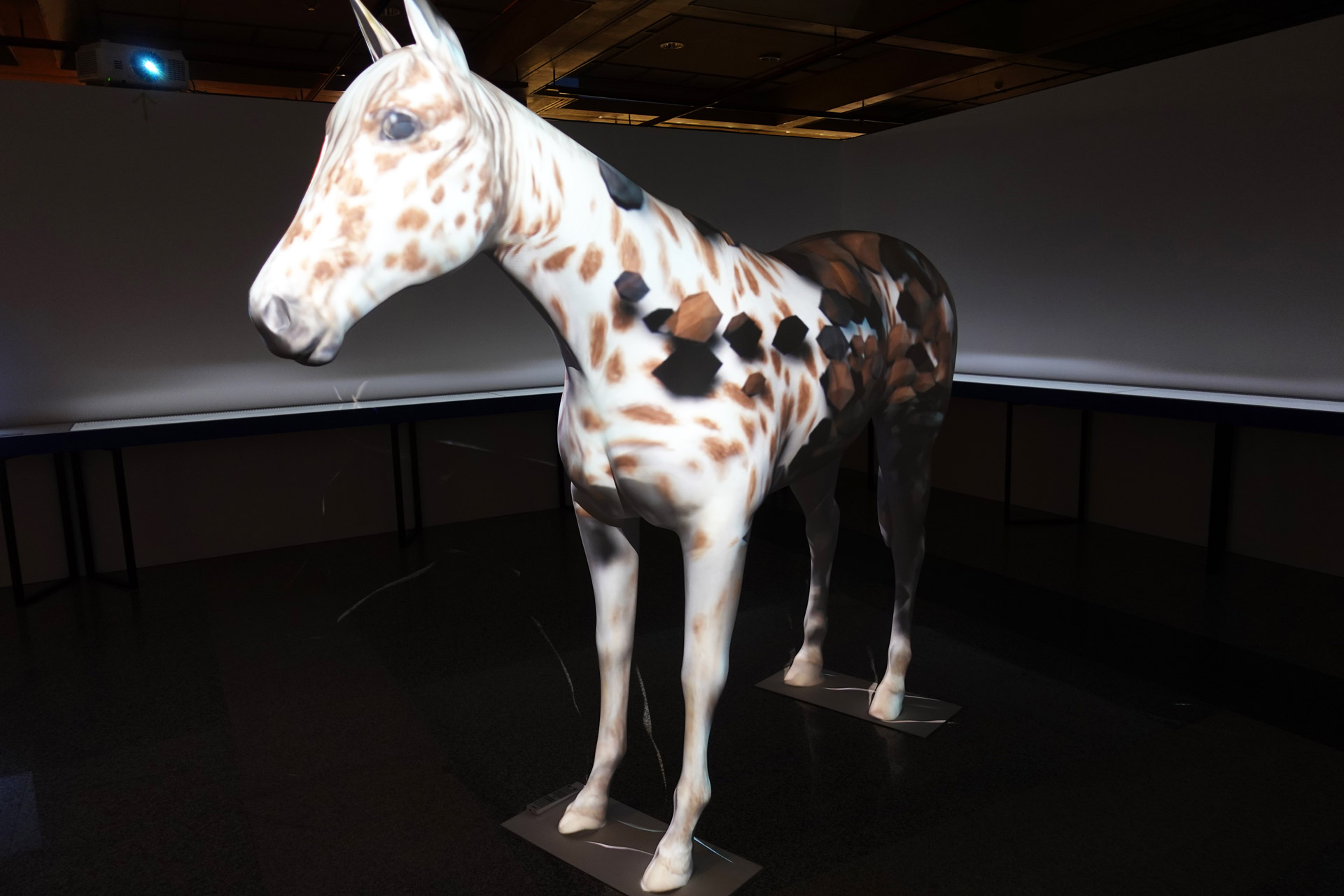
Morphosis of Castiglione's Hundred Horses
- City University of Hong Kong
- 2016
- Artefact Inspiration: One Hundred Horses, Giuseppe Castiglione, Qing dynasty (1644-1911)
Guiseppe Castiglione's One Hundred Horses (1728) silk handscroll portrays 100 horses in a variety of coat colors and with distinctive markings. This installation provides a digital animation of these equine coat textures, and projection maps them onto a white life-size horse sculpture, thereby creating the visual illusion of a morphosis across all the horses in Castglione's painting.
-
Compendium of Materia Medica
- Li Shizhen
- Edition: The Wenyuange Edition of the Complete Library in Four Sections (Siku Quanshu) of the Reign of Qianlong (1736-1795)
- 31.8cm(H) x 20.5(W)
The Compendium of Materia Medica was a grand work of pharmacy compiled by Li Shizhen of the Ming dynasty, and represents a collation of all existing knowledge on herbology prior to the 16th century and the actual observations and experiences of the author. Organized into sixteen divisions and sixty orders, the work employed a novel classification system for flora and fauna, and further utilized differentiation techniques and evidence-based methods to ascertain the names and types of the medicines included. The Compendium of Materia Medica has been copied and republished several times, and the version displayed in this exhibition was derived from the Medicine Subcategory of the Zi (Masters) Section in the Complete Library in Four Sections (Siku Quanshu) compiled in the reign of Qianlong during the Qing era. This exhibition has specially selected illustrations of several animal parts that are still used in traditional Chinese medicine, including parts derived from current endangered species, such as tiger bone and rhinoceros horn, in order to highlight the evolving relationship between humans and animals across different times and eras.
-
The Lion
- Liu Chiu-Te, Qing dynasty (1644-1911)
- Hanging scroll, ink and colors on paper
- 145cm (H) x 197cm (W)
Liu Jiude(fl. ca. late 17th c.), a native of Shuntian (modern Beijing), specialized in painting figures but was especially gifted at depicting ladies and doing portraits. The name of this paintings mentions the animal depicted as a “suanni,” which is the ancient name for a lion in Chinese. In this very large work, a lion is seen walking by a fast-moving stream, the robust body of the animal taking up almost the entire composition to convey its fierce and majestic character. The lines of the brushwork here to depict the lion are exceptionally refined, the hairs of the mane rendered almost stroke by stroke for the individual strands. The background, on the other hand, has much more bravura, creating a dramatic contrast with the lion. However, since people in ancient times rarely had the chance to view a lion, they must have added numerous details of the imagination, as demonstrated by the odd and even humorous features seen here.
-
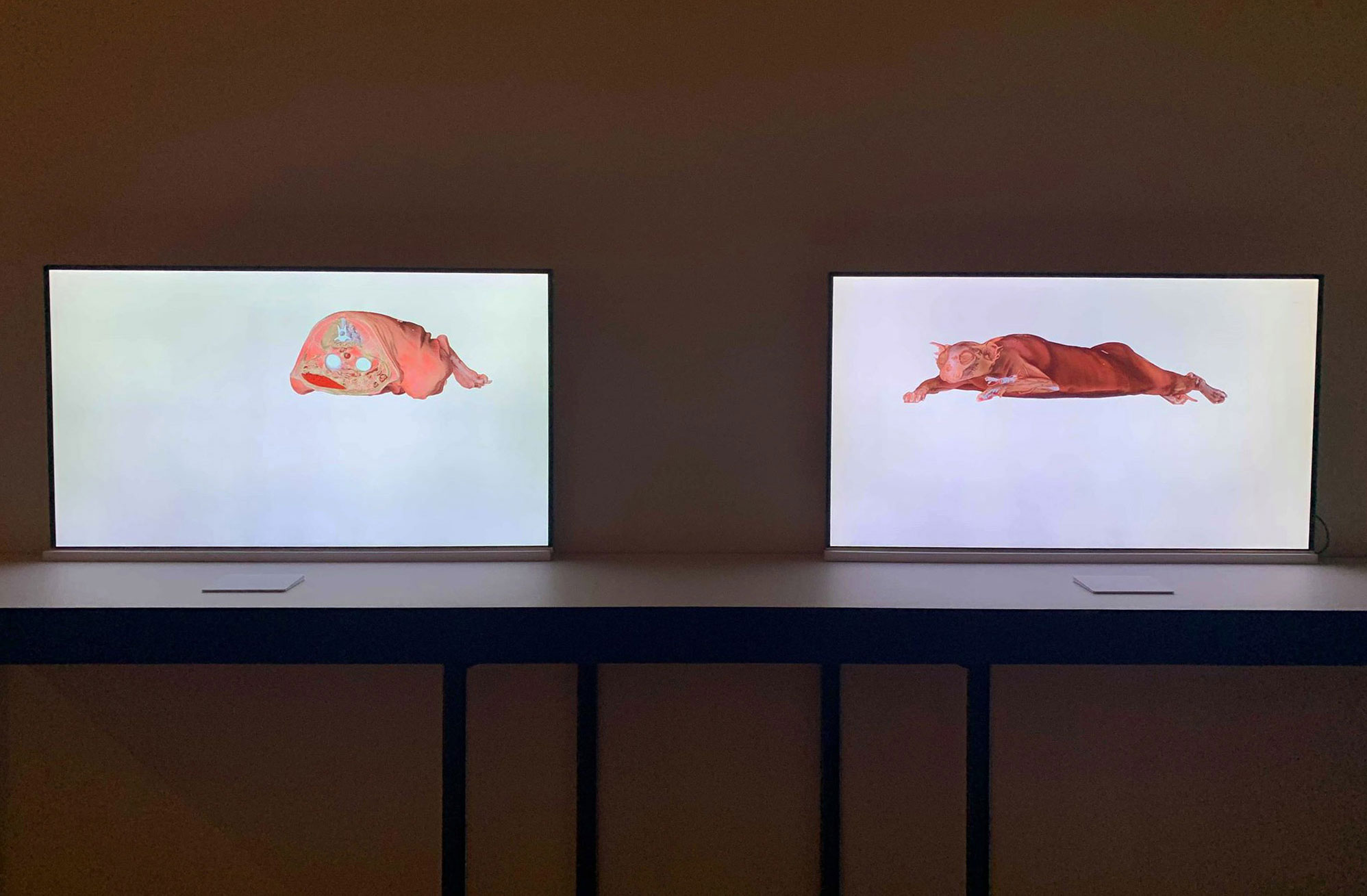
CT scans of a cat and a dog
- City University of Hong Kong
- 2018
Computer-processed combinations of many X-ray measurements (CT scans) produce cross-sectional images or virtual "slices" of a dog and cat, allowing the user to peer into the interiors of these animals' bodies. In this exhibit these imaged segments are presented in sculptural form as well as virtual 3D models that viewers can interactively examine.
